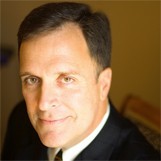A meeting or conference done right is a powerful business builder: relationships are created and enhanced, thinking is stimulated and attendees leave with actionable ideas to improve their businesses and lives. Done wrong, a meeting can become a front-page example of excess and waste. I have attended over 2,400 meetings in the past 24 years, primarily as a keynote speaker but also as a participant. There have been many times when I thought to myself, “I wish the meeting planners or event organizers knew…” Now I’ve boiled down the “things I wish they knew” into a list of 14 tips and tactics you can use to maximize your next meeting and get the best return on your investment.

2. Ask for and use input. A formal post-meeting evaluation is only helpful if the information is used. Numerical scores are interesting but specific comments are golden when they express needs to provide or disappointments to avoid repeating. And when you act on what you’ve learned, let your attendees know: “You asked for more time to network so we increased the lengths of the breaks at this year’s conference.” Reward good input and you’ll get more of it.
3. Prepare participants. Anticipate questions and answer them in advance, like “What should I wear?” or “Will there be events that require much walking?” Create an FAQ for “How to make the most of the meeting.” Make it easy for attendees to come prepared. Consider providing resources in advance—reading material, URLs and other resources—to increase the effectiveness of the time spent at the meeting.
4. Integrate, don’t just add. Design a meeting where the parts are integrated into the bigger whole. Relate different activities and sessions to the overall theme so it is clear why they are part of the event. A great event is about integrated sessions, not disparate activities hobbled together.
5. Make it relevant. Give speakers and presenters the information and material they need to relate their presentations to the overall meeting. Make specific requests about what you’d like to see covered and suggest ways presenters can be relevant.
6. Make the clock your friend. If you don’t, it will be your enemy. Starting and stopping on time and staying on track is one of the hardest things you’ll do but also critically important for the success of your meeting. You’d do well to designate someone with good people skills to be the official timer. Coach all presenters (especially executives who tend to believe their remarks are more important than the timeline) on the importance of sticking to their allotted time. One person who goes long diminishes the importance and effectiveness of everyone else on the program after them. (Go ahead and quote me on that so you don’t look like the heavy. I can’t count the number of times I’ve seen meetings nearly ruined by losing control of the clock.)
7. Design for energy. Keep programming upbeat. Use music and lighting that create energy and not just dramatic effect. Dark rooms help PowerPoint visibility but can kill energy. And here’s a good rule: short and punchy are always better than long and drawn out. Even a marginal session can be salvaged if it isn’t too long.
8. Seat to succeed. Keep the front row of the audience not more than 8-10 feet from the stage (unless there is a fire code issue in doing so). The single biggest and most common mistake I’ve seen in seating is what I call “the moat.” This is very real barrier created by having the stage too far from the front row. That makes it almost impossible to create any real connection with the audience. Proximity matters in the width of aisles as well. Aisles that are two wide create separate groups within the same audience.
9. Use people movers. These designated folks will work the hallways to let attendees know when sessions are about to begin, keep noise levels down if disruptive and generally assist in making smooth transitions and keeping the event on schedule.
10. Script the important things. That would include things like announcements (to avoid the “Oh, wait, wait! I forgot to mention…”), introductions and instructions around logistics like meals, buses, departures, etc. You’ve probably heard that “casualness creates casualties.” That is very true for meetings.
11. Select speakers based on desired results. Be clear on what you want to accomplish before you select a speaker. Most speakers can be informative, motivational, inspirational, funny and/or entertaining. Some speakers combine several elements but most are effective at a particular result. If you really want “actionable ideas”, don’t select someone who is mostly funny with little message. If you want to make people really laugh, don’t go for the moderately funny expert—get a humorist.
12. Work the room. Ask people throughout the event about their experience and how it is going for them. Note what they say. They’ll appreciate your interest and you can adjust the meeting on the fly if need be.
13. Remember that the devil is in the details. Little things can undo you. Pay attention to nuances like a microphone that keeps crackling during a presentation. It would be a shame to get the big things right and have the little things tarnish overall perception.
14. Have fun. Yes, running a meeting is exhausting, but make it your goal to have as much fun as possible. If you aren’t enjoying yourself, chances are your team and those you interact with won’t be enjoying themselves either.
Careful consideration and forethought as you plan your next meeting will do more than save you money—it will enable you to maximize your meeting and the benefits you enjoy.
To check availability and book Mark Sanborn for your next event:
Call Eagles Talent: 1.800.345.5607
Or click here to visit his keynote speaker profile page.
The needs for this subject can really vary, so connect with one of our members to determine the best message.
Email us at or call us at 1-973-313-9800.
